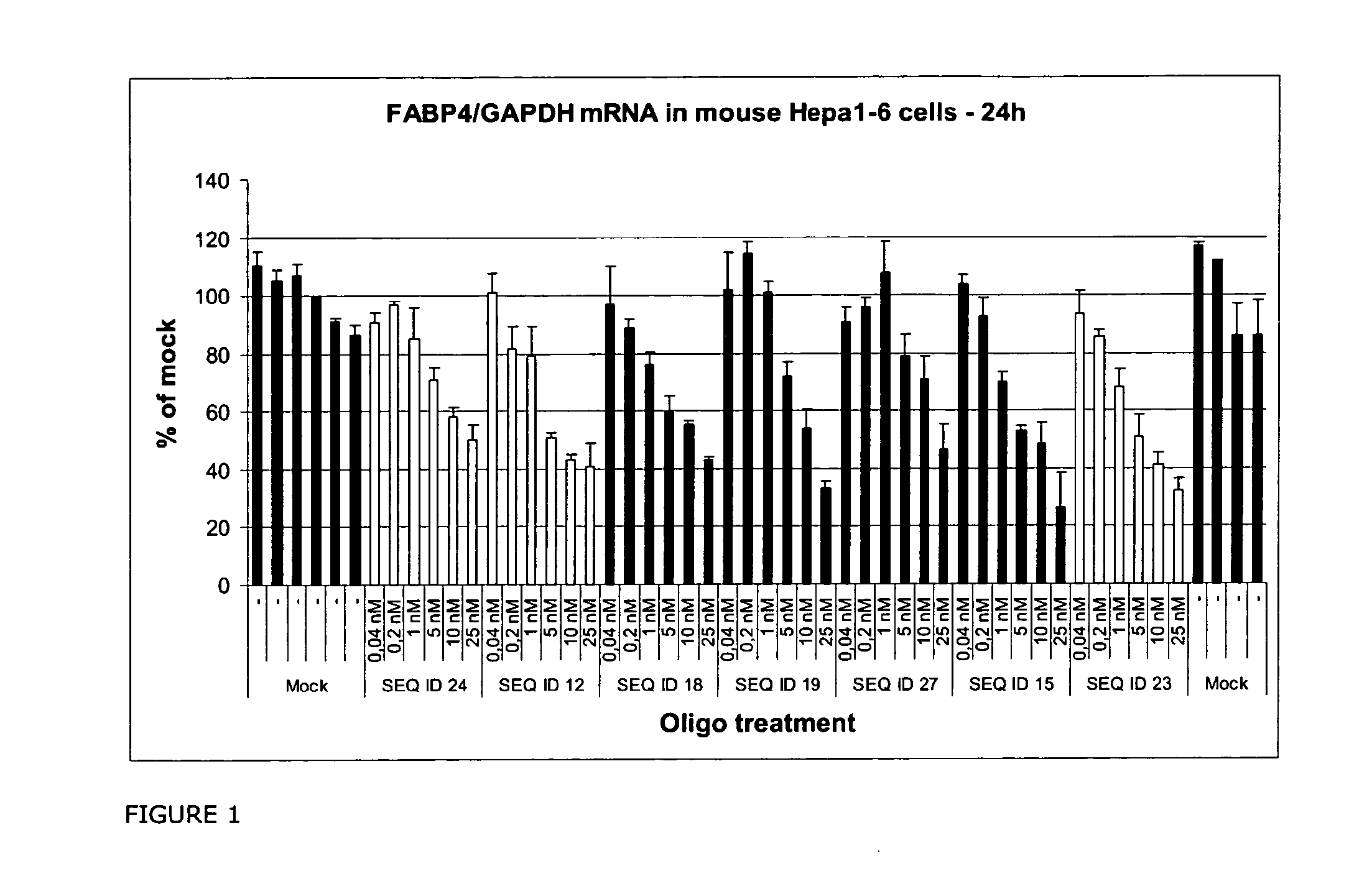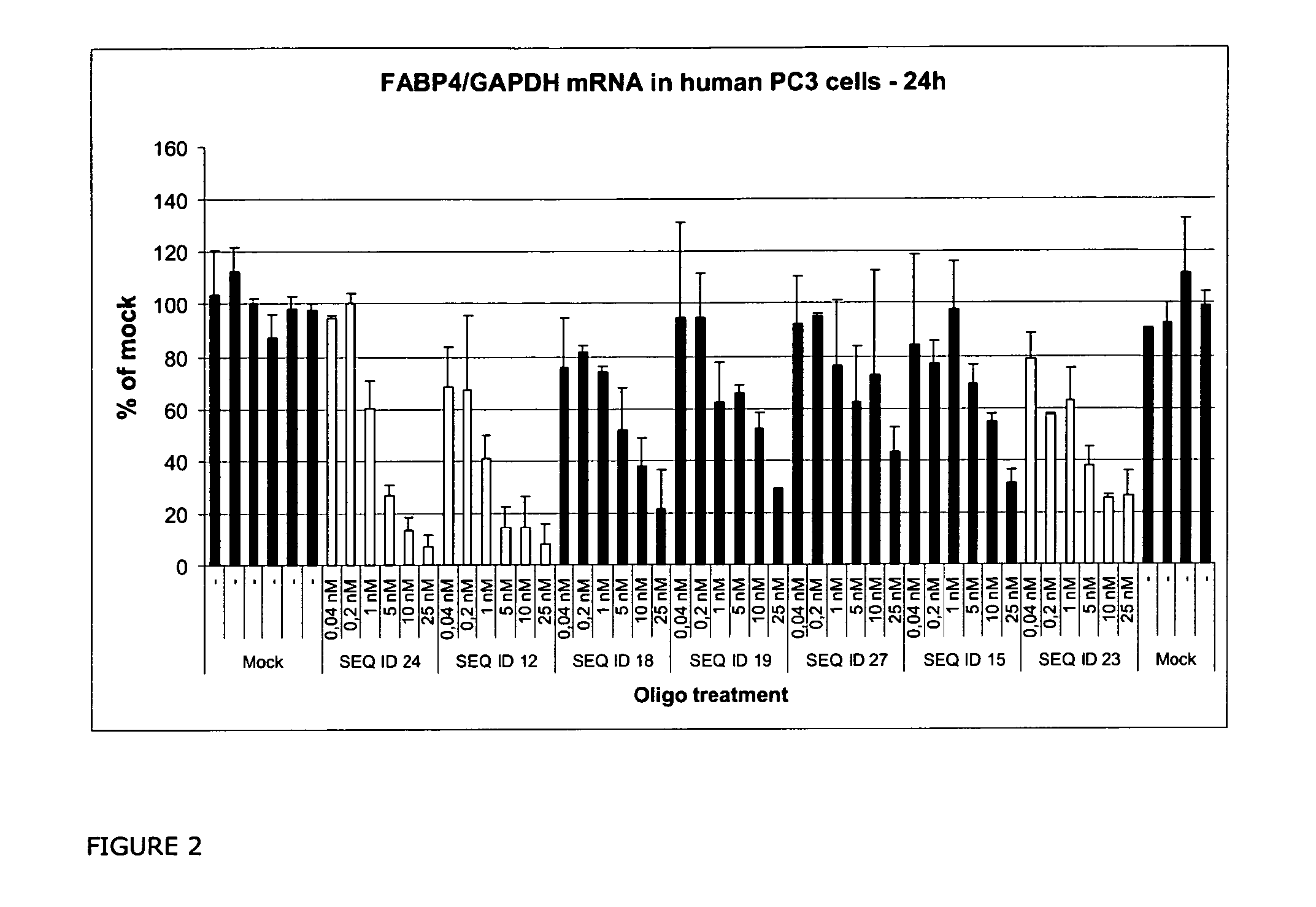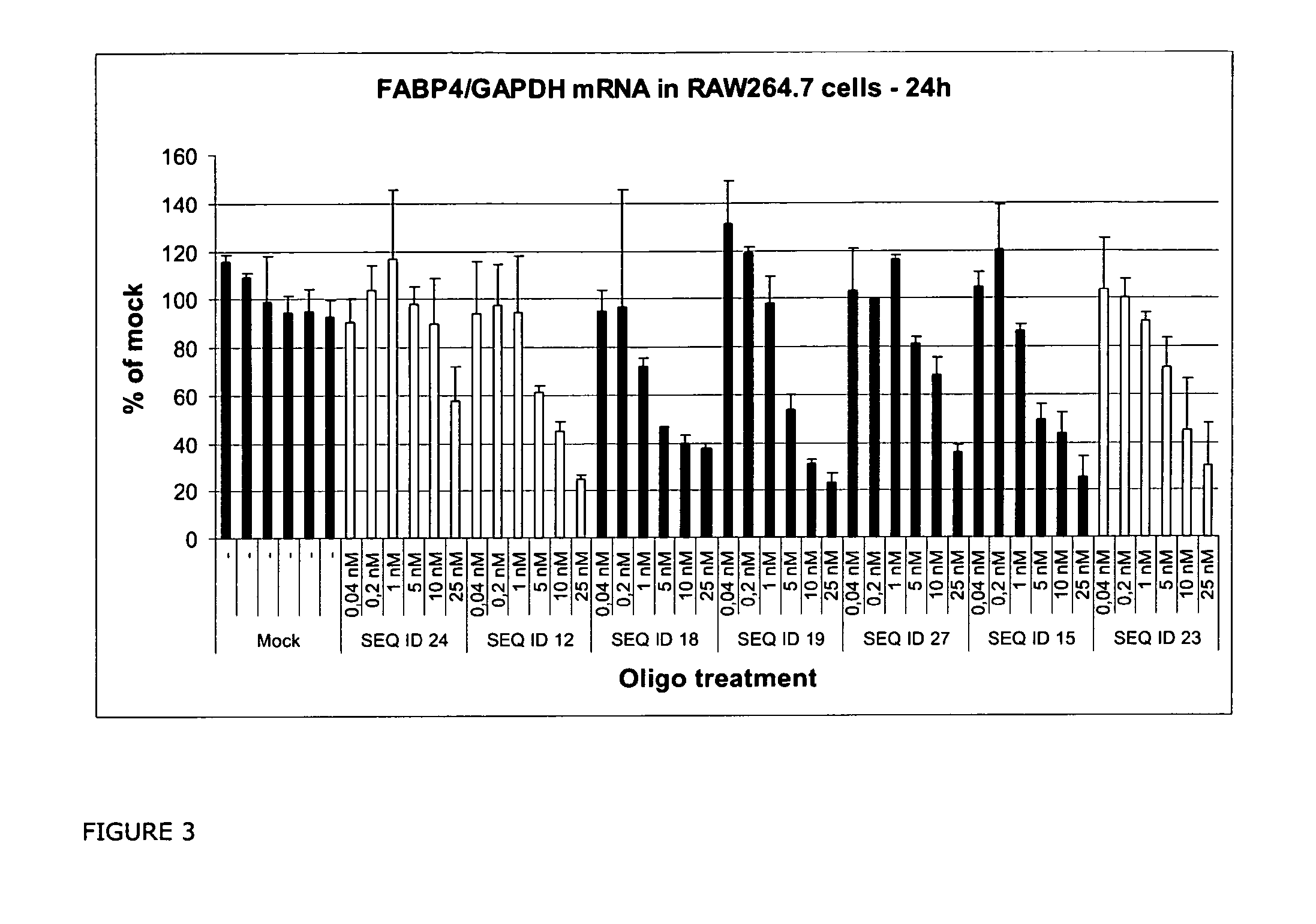RNA Antagonist Compounds for the Modulation of FABP4/AP2
a technology of fabp4/ap2 and antagonist compounds, applied in the field of compounds, can solve problems such as hindering intracellular signaling, and achieve the effects of reducing the body weight of patients and increasing the sensitivity of patients to insulin
- Summary
- Abstract
- Description
- Claims
- Application Information
AI Technical Summary
Benefits of technology
Problems solved by technology
Method used
Image
Examples
example 1
In Vitro Model: Treatment with Antisense Oligonucleotide
Cell culturing and transfections: Hepa1-6 cells, PC3 or RAW264.7 were seeded in 6-well plates at 37° C. (5% CO2) in growth media supplemented with 10% FBS, Glutamax I and Gentamicin. When the cells were 60-70% confluent, they were transfected in duplicates with different concentrations of oligonucleotides (0.04-25 nM) using Lipofectamine 2000 (5 μg / ml). Transfections were carried out essentially as described by Dean et al. (1994, JBC 269:16416-16424). In short, cells were incubated for 10 min. with Lipofectamine in OptiMEM followed by addition of oligonucleotide to a total volume of 0.5 ml transfection mix per well. After 4 hours, the transfection mix was removed, cells were washed and grown at 37° C. for approximately 20 hours Cells were then harvested for protein and RNA analysis.
example 2
In Vitro Model: Extraction of RNA and cDNA Synthesis
Total RNA Isolation
Total RNA was isolated using RNeasy mini kit (Qiagen). Cells were washed with PBS, and Cell Lysis Buffer (RTL, Qiagen) supplemented with 1% mercaptoethanol was added directly to the wells. After a few minutes, the samples were processed according to manufacturer's instructions.
First Strand Synthesis
First strand synthesis was performed using either OmniScript Reverse Transcriptase kit or M-MLV Reverse transcriptase (essentially as described by manufacturer (Ambion)) according to the manufacturer's instructions (Qiagen). When using OmniScript Reverse Transcriptase 0.5 μg total RNA each sample, was adjusted to 12 μl and mixed with 0.2 μl poly (dT)12-18 (0.5 μg / μl) (Life Technologies), 2 μl dNTP mix (5 mM each), 2 μl 10×RT buffer, 0.5 μl RNAguard™ RNase Inhibitor (33 units / ml, Amersham) and 1 μl OmniScript Reverse Transcriptase followed by incubation at 37° C. for 60 min. and heat inactivation at 93° C. for 5 min.
Whe...
example 3
In Vitro and In Vivo Model: Analysis of Oligonucleotide Inhibition of FABP4 Expression by Real-Time PCR
Antisense modulation of FABP4 mRNA expression can be assayed in a variety of ways known in the art. For example, FABP4 mRNA levels can be quantified by, e.g., Northern blot analysis, competitive polymerase chain reaction (PCR), or real-time PCR. Real-time quantitative PCR is presently preferred. RNA analysis can be performed on total cellular RNA or mRNA.
Methods of RNA isolation and RNA analysis such as Northern blot analysis are routine in the art and is taught in, for example, Current Protocols in Molecular Biology, John Wiley and Sons.
Real-time quantitative (PCR) can be conveniently accomplished using the commercially iQ Multi-Color Real Time PCR Detection System available from BioRAD or 7500Fast Real-Time PCR System from Applied Biosystem. Real-time Quantitative PCR is a technique well known in the art and is taught in for example Heid et al. Real time quantitative PCR, Genome ...
PUM
| Property | Measurement | Unit |
|---|---|---|
| Fraction | aaaaa | aaaaa |
| Length | aaaaa | aaaaa |
| Composition | aaaaa | aaaaa |
Abstract
Description
Claims
Application Information
 Login to View More
Login to View More - R&D
- Intellectual Property
- Life Sciences
- Materials
- Tech Scout
- Unparalleled Data Quality
- Higher Quality Content
- 60% Fewer Hallucinations
Browse by: Latest US Patents, China's latest patents, Technical Efficacy Thesaurus, Application Domain, Technology Topic, Popular Technical Reports.
© 2025 PatSnap. All rights reserved.Legal|Privacy policy|Modern Slavery Act Transparency Statement|Sitemap|About US| Contact US: help@patsnap.com



